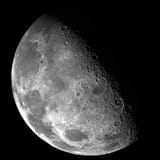Moon Monday #225: Lots of global lunar mission updates 🌙
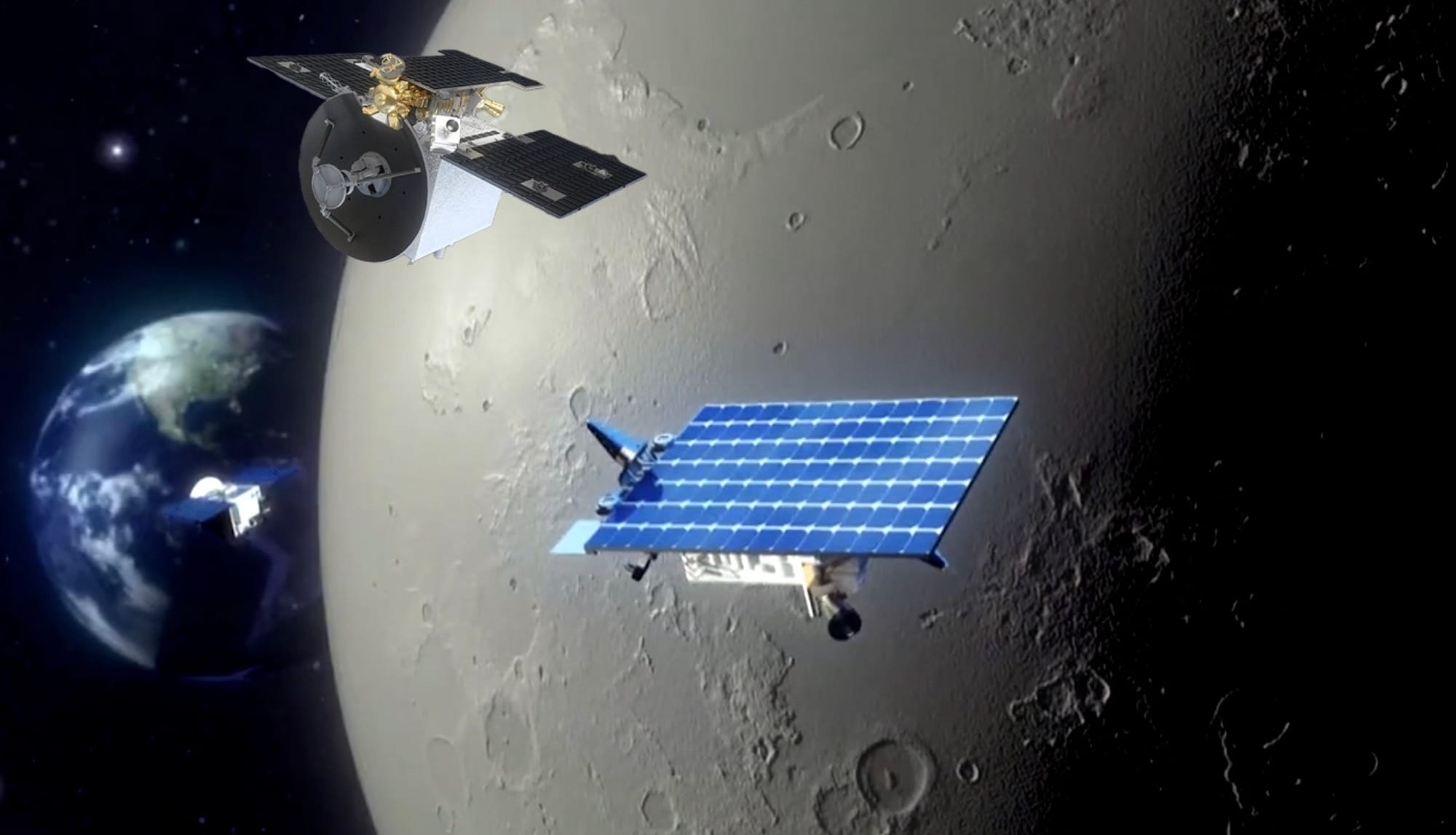
Key news of the month: China has achieved daytime Earth-Moon distance measurement wherein a 1.2-meter telescope reflected an infrared laser off of a small retroreflector on the 61-kilogram Tiandu 1 lunar orbiter. This was the first ever daytime laser distance measurement using an orbiter, accomplished despite massive interference from our Sun. Tiandu 1 was launched alongside Queqiao 2 last year in March. Between this development, other Chinese satellites recently demonstrating automated navigation at the Moon, and the Queqiao 1 & 2 orbiters having enabled humanity’s first two lunar farside missions with Chang’e 4 and Chang’e 6 respectively, China has cemented and further advanced its lead in building a lunar communications and navigation network. The CASC release about the daytime laser-based distance measurements states that the demonstration will “support the argumentation and implementation of major deep-space exploration projects in the future, such as the International Lunar Research Station” (ILRS). The latter is the China-led effort to build and operate a long-term Moonbase.
Notable exploration updates from GLEX 2025
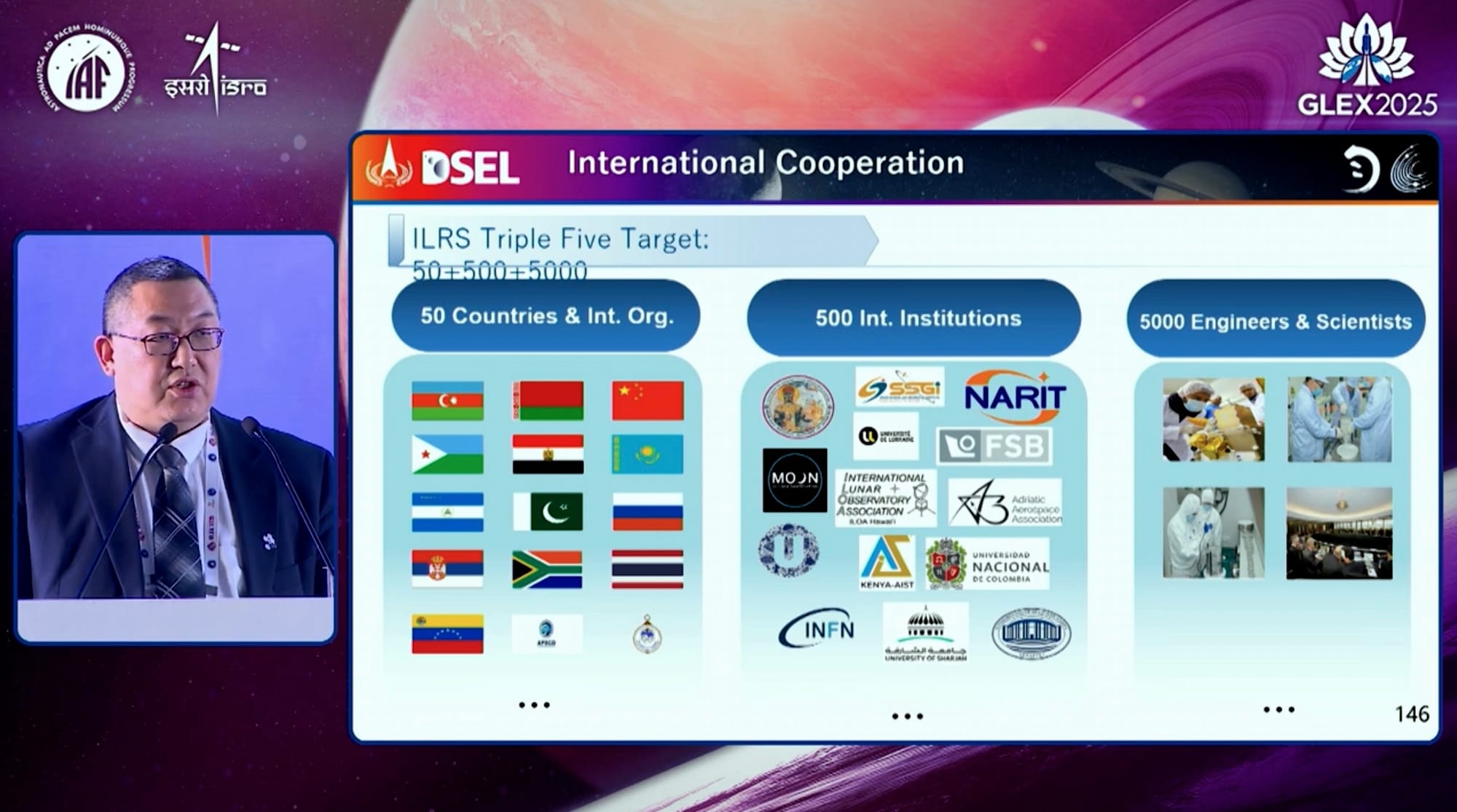
The IAF organized the latest international Global Space Exploration Conference (GLEX) in New Delhi, India this month, which ISRO hosted. I attended as well as spoke at the conference. Below are notable updates of wider interest from GLEX—which saw active participation from over a dozen national space agencies, including their heads & program leads, astronauts, technical mission leads, space scientists, etc.
- China formally welcomed India to cooperate on Moon missions. Wu Weiren, the Chief Designer of China’s extremely successful Chang’e lunar exploration program as well as the Director General of China’s Deep Space Exploration Laboratory (DSEL), said during a panel of various national space agency heads that China “especially welcomes India to participate in cooperating and collaborating on the ILRS” Moonbase project. Considering the not-so-great relations between China and India, and their mutual space activities being nearly nil, China’s invitation can be interpreted to be likely a formality. Nevertheless, it’s good to have the invitation explicitly said than not. During the same panel, Weiren also stated:
The Moon belongs to all human beings. Therefore we welcome all scientists in the world to participate into the ILRS. [...] We welcome international cooperation on our deep space exploration missions. Every country can apply.
- Zhongmin Wang, Director of International Cooperation at DSEL, reiterated and expanded on those intentions during his presentation on China’s lunar and deep space exploration missions. As China has publicly stated before, such cooperation and collaboration can be on multiple levels: from flying payloads to conducting joint scientific studies to contributing spacecraft systems and subsystems and so on.
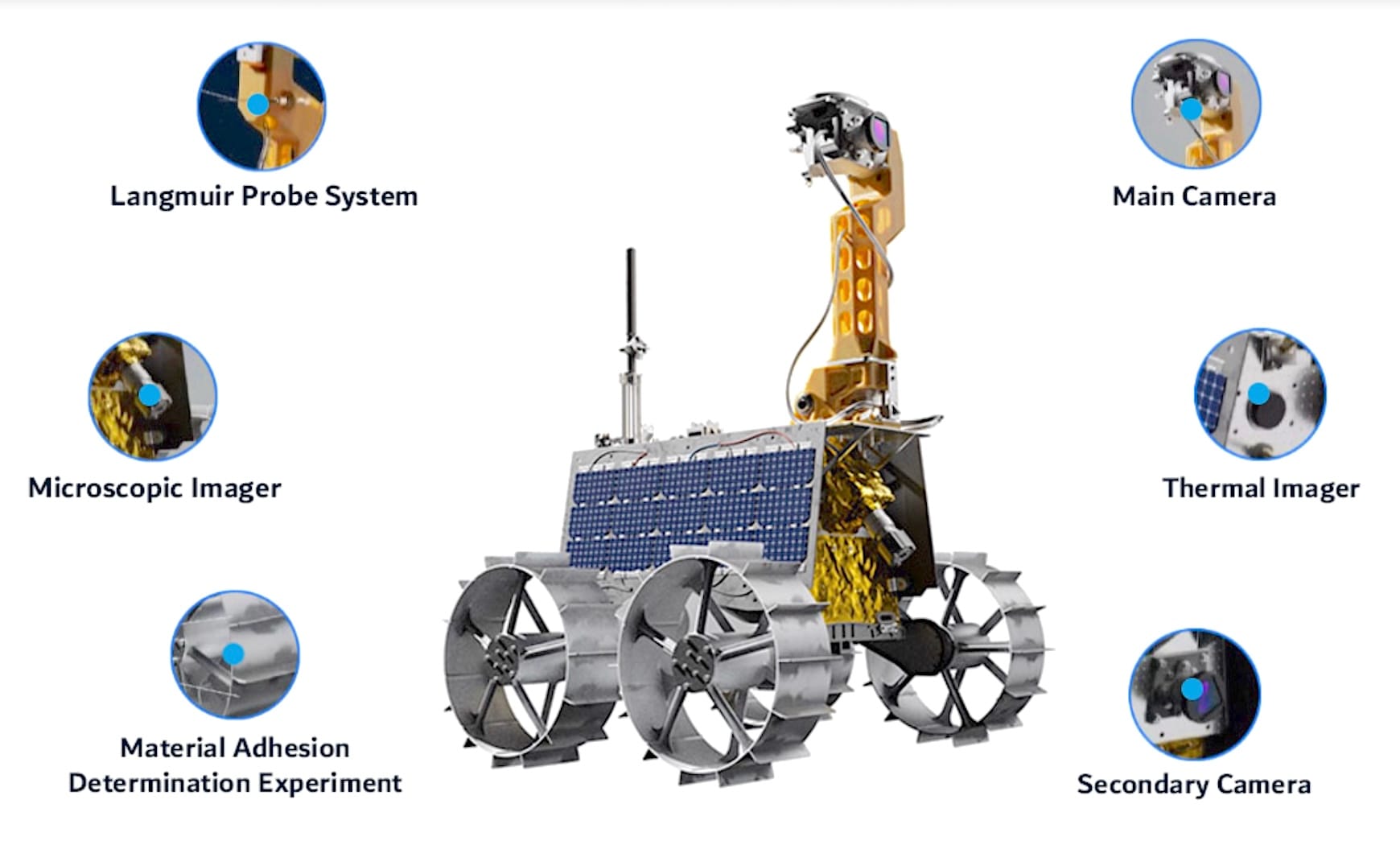
- Salem Al Marri, Director General of UAE’s space agency MBRSC, said during another panel of space agency leads that the country’s second Rashid lunar rover will launch next year. However, there continues to be no word from the UAE on which lander will carry the rover to the Moon. Some unvetted sources indicate it might be China’s Chang’e 7 lander that does so. UAE’s near-identical Rashid rover 1 launched in 2023 couldn’t operate on the Moon since ispace Japan’s first Moon lander carrying the rover crashed. On the same GLEX panel as Al Marri was on, Arif Karabeyoğlu of the Turkish space agency said that the country’s first lunar mission, an orbiter, is being targeted for launch in late 2026 or early 2027. It will use an indigenous propulsion system, which itself will gain space heritage later this year on an Earth orbiter. He added:
“The Moon is so close it’s hard to ignore.”
- ISRO and ESA are enhancing their cooperation in space exploration. For the Moon in particular, the agencies are discussing “alignment on payloads and robotic scientific missions”. Nigar Shaji, Associate Director of ISRO’s key satellite integration and testing center URSC, told during her GLEX panel that ISRO is open to flying ESA payloads on India’s upcoming lunar missions.
- Notably, NASA was the only major space agency missing at GLEX due to the Trump administration’s policies limiting use of federal budgets for travel, which have curbed the space agency’s representation at multiple national and international forums. Anjali Marar reports that anonymous sources from GLEX’s organizing committee said that at least a dozen NASA officials were expected to attend GLEX but the same did not materialize.
On a personal note, I had fun moderating a rather stellar panel at GLEX on current themes and challenges in global Moon exploration. Watch the video. 🌙
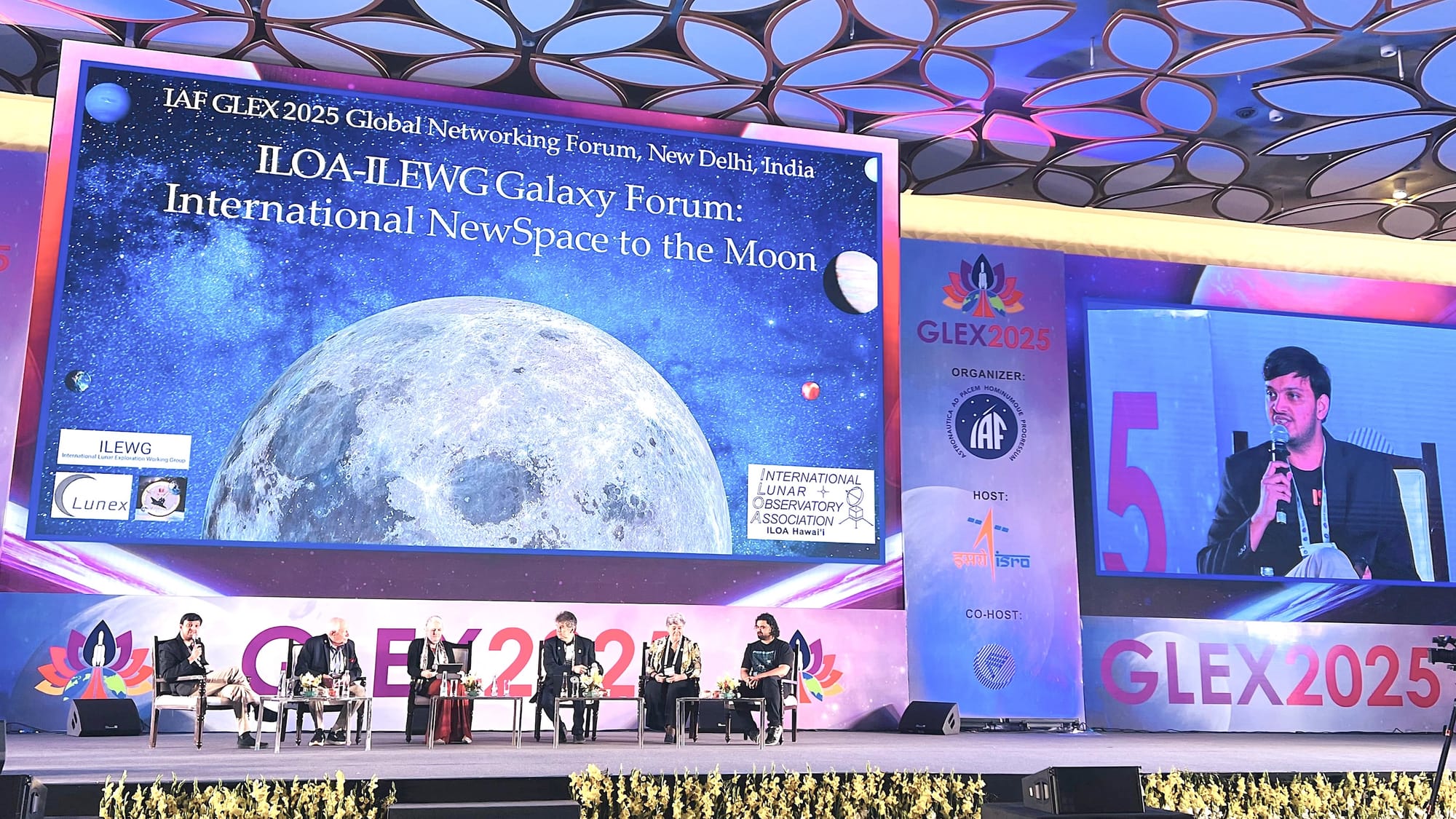
Many thanks to Catalyx Space and Gurbir Singh for sponsoring this week’s Moon Monday! If you too appreciate my efforts to bring you this curated community resource for free and without ads, support my independent writing. 🌙
Artemis and CLPS updates
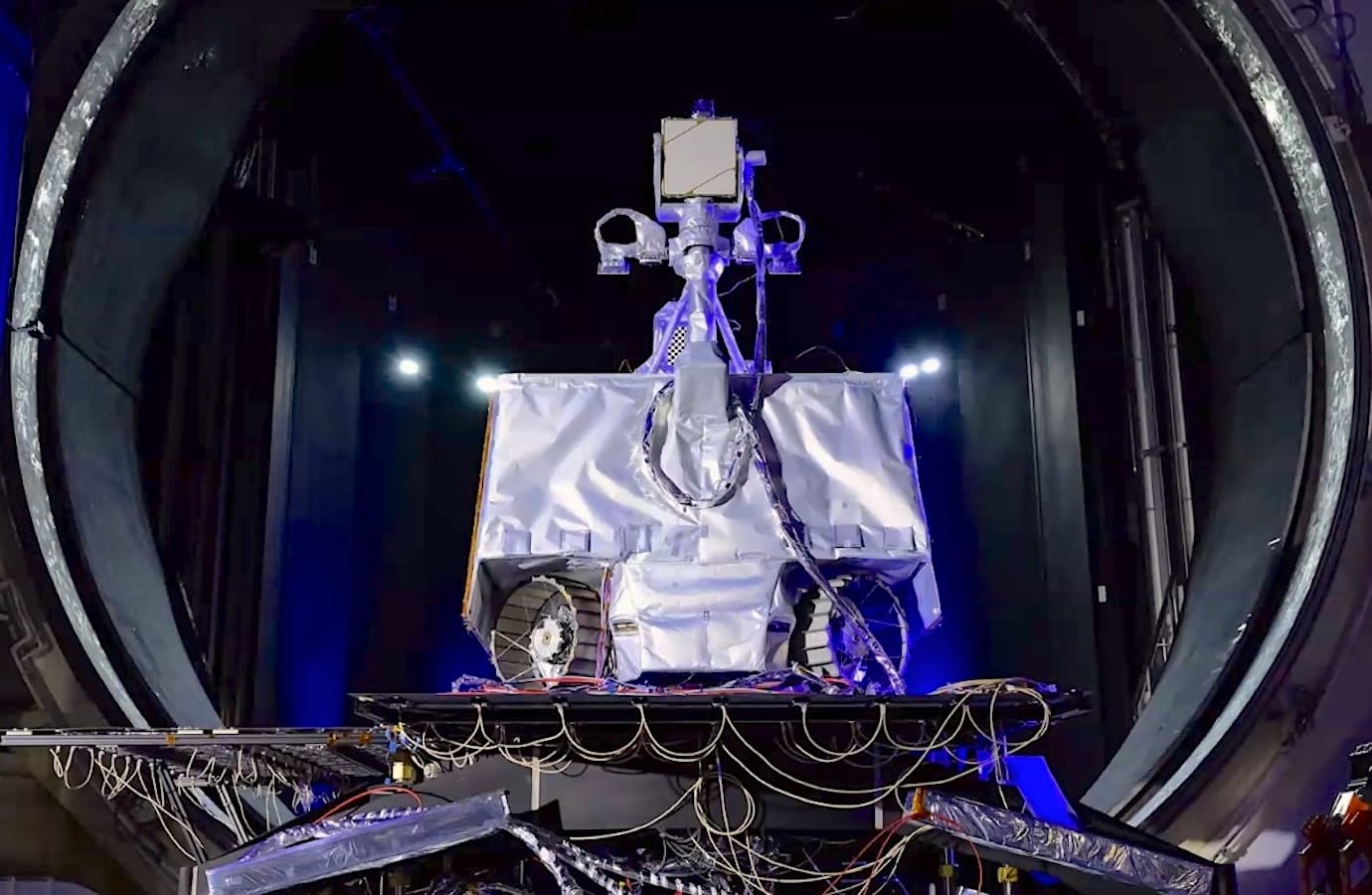
- Marcia Smith reports that NASA is trying to launch the crewed Artemis II Moon mission in February 2026. In the meanwhile, NASA announced that the Artemis II launch will also carry a CubeSat from Saudi Arabia in addition to the previously announced ones from Germany and South Korea.
- NASA’s VIPER rover cannot catch a break. Originally meant to reveal the first set of hard facts about water ice deposits on the Moon’s south pole, NASA instead questionably cancelled VIPER’s flight as part of the agency’s CLPS program last year citing cost challenges. The agency then scrambled to find a private company that will fly and operate the rover at its own cost, an approach many argued decidedly fails at VIPER’s original goal because asking a commercial entity to fulfill the mission’s scientific objectives at its own cost is a non-starter. NASA seems to have come to the same conclusion, now saying that after evaluating the proposals submitted by private companies, the agency deems none to be acceptable. NASA added that it needs to re-structure the solicitation such that it elicits stronger proposals that hopefully stay closer to VIPER’s original science goals. In that context, ditching VIPER’s purely private flight is a good decision but at the same time it’s costing the agency even more delays in knowing the ground truth about lunar water—which is critical in planning sustainable exploration of our Moon but is also what the US has been failing at for years now.
- In March, Intuitive Machines’ second CLPS lander for NASA called Athena hard landed on the Moon’s south pole and came to rest on its side, which led to the mission being unsuccessful across all of NASA’s primary goals related to learning about local water ice. Following a failure analysis, Intuitive says that other than the non-working laser altimeter leaving the lander half-blind about its distance from the lunar surface, Athena hard-landed because its image-based crater-and-feature recognition system was not adequately trained. It relied on images taken from orbit by NASA’s Lunar Reconnaissance Orbiter (LRO), which doesn’t accurately represent how those craters look up close at increasingly lower altitudes. However, one should also note here that the holistic nature of the lunar environment in and around the targeted landing site is usually accounted for in the planning of a Moon mission and its contingency scenarios. In any case, Intuitive says it will fix these and other issues identified during the mission failure analysis while preparing its third CLPS mission for NASA targeting launch next year.
- Zeno Power has raised $50 million in Series B funding, a major chunk of which will go towards developing and demonstrating the company’s nuclear electric power system on the Moon by 2027. In 2023, NASA funded eight advanced exploration technologies which could contribute towards sustained robotic and crewed exploration of our Moon. As part of it, NASA awarded $15 million to a Zeno-led team for demonstrating nuclear electrical power on the Moon. Specifically, the team aims to demonstrate a radioisotope generator which uses a Stirling engine instead of traditional thermocouples to convert radioactive heat into electrical power. The system will be based on the Americium-241 isotope, which is more readily available than the conventionally used Plutonium-238.
- On May 15, Norway became the 55th country and 22nd European nation to sign the US-led Artemis Accords for cooperative lunar exploration.
Mission updates from ispace

- ispace Japan’s second Moon lander RESILIENCE successfully entered lunar orbit on May 7 with a roughly nine-minute main engine burn. The lander launched in January on a SpaceX Falcon 9 rocket, and then followed a multi-month low energy trajectory to the Moon. ispace is targeting June 5 as the landing date for RESILIENCE.
- ispace Japan’s US subsidiary announced that its first CLPS mission for NASA through Draper targeting landing on the Moon’s farside will now launch in 2027 instead of 2026 due to an engine swap on the mission’s APEX lander and changes associated with it.
- Relatedly, ispace Japan has taken $35 million more in loan financing to continue developing said ispace US’ CLPS lander as well as the next mission from ispace Japan. Earlier this year, ispace secured a $10 million loan from Sumitomo Mitsui Trust Bank to the same ends. This development continues to highlight the intersection of CLPS, funding, and science.
More Moon
- Alexandra Witze reports that even more NASA-related lunar and planetary science community documents online have been taken down, specifically from websites organized by the Lunar and Planetary Institute (LPI) and its NASA-backed parent organization called the Universities Space Research Association (USRA) who cite an executive order from US President Donald Trump as the reason for doing so. This follows critical scientific documents going missing from another NASA-backed community website since over three months now. NASA has also removed inclusive language from the leading webpage of its Artemis program.
- I wrote the following article for the Open Lunar Foundation (a Moon Monday sponsor) about the Lunar Registry they’re building: Moon missions need their own Wikipedia and beyond
